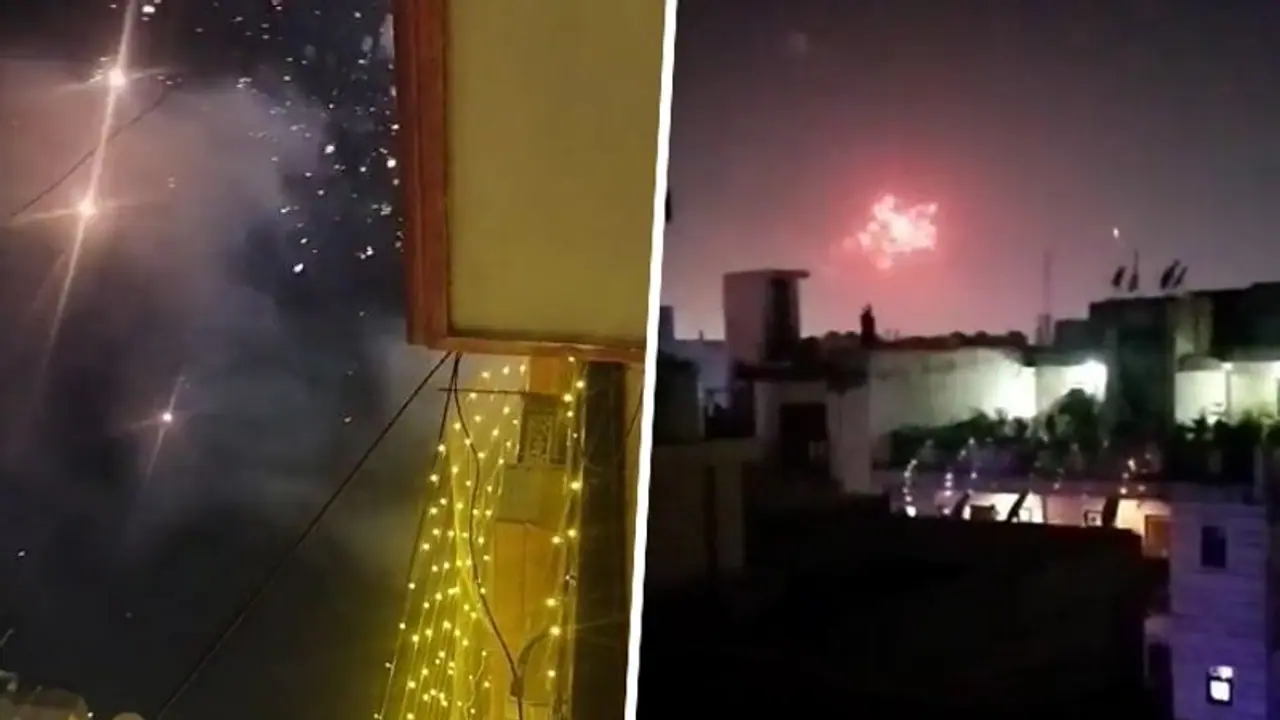The Supreme Court's November 7 order explicitly banning firecrackers containing barium was reiterated, emphasizing its applicability to every state and not limited solely to the Delhi-NCR region, currently grappling with severe air pollution.
Despite the ban on firecrackers, reports indicate widespread violations in various areas of Delhi during Diwali celebrations on Sunday. In Shahpur Jat and Hauz Khas, people gathered in parks to burst firecrackers, with the intensity increasing after 4 pm, albeit comparatively lesser than the previous year.

Notably, residents of Defence Colony also witnessed the bursting of firecrackers, leading environmentalist Bhavreen Kandhari to express disappointment in the failure of implementing authorities. She highlighted the ineffectiveness of the Supreme Court's firm stance on firecrackers, with complaints registered at the Defence Colony police station yielding no change.
"The Supreme Court's firm stance on firecrackers got blown in the smoke of the firecrackers. Despite warnings and a complete ban...implementing authorities have failed yet again. Wondering what stance will the Supreme Court take now? ...We are allowing our children to choke in the name of celebration," she told PTI.
By 7:30 pm, Greater Kailash and Chittaranjan Park experienced a subdued intensity of firecrackers. Residents anticipated a surge in activity after puja ceremonies. In Chhatarpur, south Delhi, firecrackers were audible from 6 pm onward, with shopkeepers in the area openly defying the ban and selling small firecrackers to children.
Some residents in East of Kailash also indulged in bursting firecrackers from 6:30 pm onwards, characterized by intermittent noise of varying intensity. However, the Lalita Park area of Laxmi Nagar reported minimal firecracker activity until 7:30 pm, with locals speculating a potential increase later in the night.
Several areas in east Delhi experienced a moderate impact, although residents noted a noticeable decrease in firecracker activity compared to the previous year. The Supreme Court's November 7 order explicitly banning firecrackers containing barium was reiterated, emphasizing its applicability to every state and not limited solely to the Delhi-NCR region, currently grappling with severe air pollution.
Here's a look at some of the videos of the Delhi residents bursting crackers despite ban that have gone viral on X:
Delhi-NCR AQI deteriorates
Sunday night witnessed a surge in PM10 and PM2.5 levels across various parts of the city as residents defied the firecracker ban. Monitoring stations reported hourly PM10 levels exceeding the 24-hour standard by 15 to 16 times, with the Jawaharlal Nehru Stadium recording a peak concentration of 1632 µg/m3 at 2 am—well above the 100 µg/m3 standard. The PM10 level remained consistently high, exceeding 1000 µg/m3 from 11 pm to 4 am, and gradually decreased to 467 µg/m3 by 8 am on Monday, according to data from the Delhi Pollution Control Committee (DPCC).
Similarly, PM2.5 levels at the Jawaharlal Nehru Stadium surpassed the 24-hour standard by over 20 times on Sunday night and early Monday morning. The concentration peaked at 1423 µg/m3 at 2 am, against a 60 µg/m3 standard, before reducing to 383 µg/m3 by 8 am. RK Puram experienced a comparable increase in pollution levels, with the PM10 concentration rising from 165 µg/m3 at 7 pm to 1380 µg/m3 at 11 pm on Sunday, falling to 405 µg/m3 by 8 am on Monday.
Despite the previous week's winds and rainfall, attributed to a western disturbance, having temporarily improved air quality, the city's Air Quality Index (AQI) worsened post-Diwali. At 8 am on Monday, the 24-hour average AQI was in the 'poor' category at 283, compared to 218 at 3 pm on Sunday. Some monitoring stations reported a 'very poor' AQI category, with Jahangirpuri at 341 and Lodhi Road at 315. Notably, the city had experienced its best Diwali air quality in eight years on the day before, with a 218 AQI at 4 pm on Sunday.
This marked improvement was attributed to winds and rain clearing accumulated pollutants, resulting in a 'severe' air quality rating before Diwali. Comparatively, the AQI on Diwali day in the previous year was 312, reaching 382 in 2021, 414 in 2020, 337 in 2019, and 281 in 2018. Diwali day AQI had peaked at 342 in 2015, 431 in 2016, and 319 in 2017.
